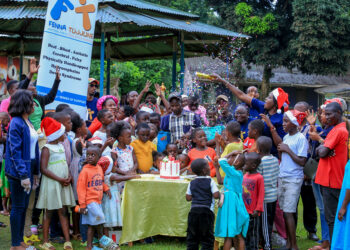The Total Fertility Rate (TFR) among Ugandan women is 4.5 children per woman, the 2024 National Population & Housing Census has revealed. This is a decline from 5.8 children in 2014.
This implies that a woman in Uganda, who is at the beginning of her childbearing years, would expect to give birth to an average of about five children (4.5 children per woman) by the end of her reproductive period, if age-specific fertility levels remained the same.
The report adds that there were 1.5 million children born to all women (10-59 years) in the twelve months preceding the census date. This gives a Crude Birth Rate (CBR) of 33.2 births per 1,000 population. The CBR is defined as the number of births that occur in a particular year per 1,000 people.
According to the report, the CBR for Uganda declined from 50.4 births in 1969 to 33.2 births per 1,000 population in 2024. The report reveals that 6.5 percent of adolescent girls age 10-19, had begun childbearing. Of these, five percent had a live birth and 1.5 percent were pregnant with the first child.
The results show that among the adolescents, aged 15-19 years, 10 percent had already had a child with nearly 2 percent having had 2 or more. The census report also reveals that about 21 percent of the women in the 45–49 age group, were childless and 25 percent had 8 children or more.
The general fertility rate shows that there were 129 births for every 1,000 women in the reproductive age group (15-49 years). Childbearing starts early with women aged 15-19 years old. It also peaks early at 20-24 years age group and then declines thereafter. The same trend was observed for the 2014 Census. A sharp decline in the Age-Specific Fertility Rate (ASFRs) was witnessed between 35-39 and 40-44 age groups.
Fertility analysis is important in understanding past, current and future trends of population size, structure and growth. Information on fertility levels, patterns and trends experienced by a country is important for socio-economic planning, monitoring and evaluating programmes.
To formulate or evaluate policies concerning population growth, information is needed not only about the number of births but also on trends of birth rates and other measures of fertility over time. According to UBOS, current fertility is measured using the Age-Specific Fertility Rate (ASFR), the Total Fertility Rate (TFR), the General Fertility Rate (GFR) and the Crude Birth Rate (CBR). The ASFR provides the age pattern of fertility and the TFR is the number of live births (children) a woman will have encountered at the end of her reproductive life if she experiences the current age pattern of child bearing.
Fertility is one of the three components of population dynamics (the others being mortality and migration) and is essential for any study on the population. For countries lacking a timely and reliable system of vital statistics, fertility data provides an opportunity for estimating vital rates that would otherwise not be available.
Do you have a story in your community or an opinion to share with us: Email us at editorial@watchdoguganda.com













